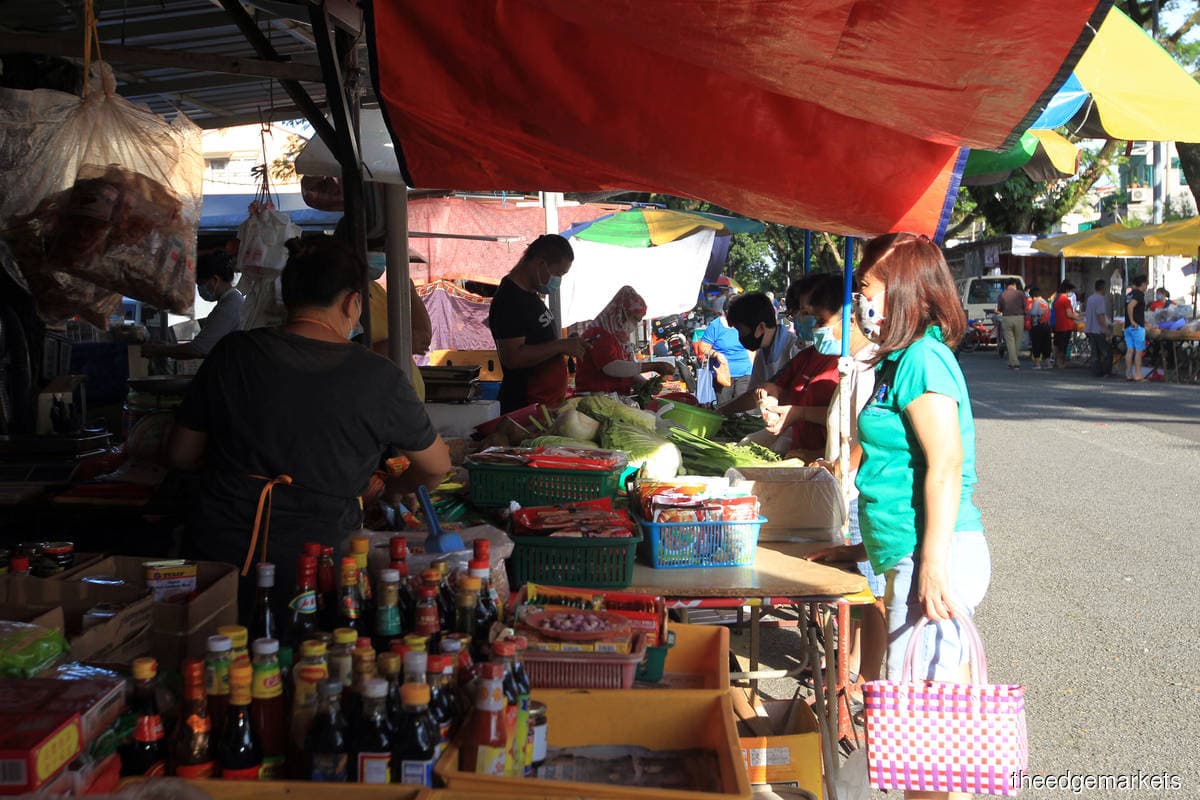
KUALA LUMPUR (July 10): The Statistics Department said today the absolute poverty rate in Malaysia improved from 7.6% in 2016 to 5.6% in 2019 following the revision of the national poverty line income (PLI) according to current needs that emphasise on optimal food intake and quality non-food basic requirements.
In a statement today, chief statistician Datuk Seri Dr Mohd Uzir Mahidin said based on the 2019 methodology, the mean value of the national PLI is at RM2,208, which is within the bottom 10% of households.
"Meanwhile, hardcore poverty recorded 0.4% in 2019 as compared to 0.6% in 2016,” Mohd Uzir said in the statement, which was issued in conjunction with the launch of the department’s Household Income and Basic Amenities Survey Report and Household Expenditure Survey Report at Putrajaya today.
At a press conference there today, Mohd Uzir said the mean value of the PLI rose to RM2,208 per household per month in 2019 from RM980 previously. He said Malaysia’s PLI was last measured in 2016 using the 2005 methodology, which valued the PLI at RM980.
Based on the new PLI, he said the number of poor households declined to 405,441 households in 2019 from 525,743 households in 2016.
Based on the old PLI, the number of poor households increased to 405,441 in 2019 from 24,700 in 2016, according to him.
Malaysian household income and expenditure have also risen. In the statement, Mohd Uzir said median income grew 3.9% a year to RM5,873 in 2019 while mean income increased 4.2% per year to RM7,901.
"Seven states had median income above the national level. Meanwhile, three Federal states, Selangor and Johor recorded mean income higher than the national level of RM7,901,” he said.
He said mean household expenditure grew 3.9% in 2019. He said the department’s household expenditure survey findings showed that demand for services by households is increasing.
"The composition for (the) services component increased to 52.1% in 2019, he said.
At the press conference, Mohd Uzir said 61.6% of Malaysian households' average income is derived from paid employment, followed by 17.3% from self employment, 12.9% from property and investments, and 8.2% from monetary transfers such as remittances, alimony, pension, and other assistance.
“The survey shows that more people continue to seek self-employment, as this segment rose to 17.3% from 15.6% in 2016,” he said.
Income inequality, as measured by the Gini coefficient, is also a highlight of the Household Income and Basic Amenities Survey Report. Economists use the Gini coefficient as a gauge to measure income inequality within a country.
In the statement, Mohd Uzir said the Gini coefficient, based on gross income, increased 0.008 index point from 0.399 in 2016 to 0.407 in 2019, which showed that household income gap was widening. Based on disposable income, the Gini coefficient was 0.393 in 2019 versus 0.391 in 2016, according to him.
According to the Household Income and Basic Amenities Survey Report, the Gini coefficient, based on gross income in urban areas, increased from 0.389 in 2016 to 0.398 in 2019 while the Gini coefficient in rural areas rose from 0.364 in 2016 to 0.367 in 2019.
"The Gini coefficient for the bumiputera has risen from 0.385 to 0.389 while for the Chinese it has increased from 0.411 to 0.417. The Gini coefficient for the Indians also increased from 0.382 to 0.411.
"The Gini coefficient can also be measured based on disposable income where in 2019 it grew by 0.2 percentage point from 0.391 (2016) to 0.393 (2019). Over the period, Gini coefficient in urban areas increased from 0.38 to 0.385 while Gini coefficient in rural decreased from 0.365 to 0.361. The Gini coefficient for the bumiputera reduced from 0.38 to 0.377 while for the Chinese it climbed up from 0.396 to 0.399. The Gini coefficient for the Indians also recorded a rise from 0.372 to 0.399," the report said.